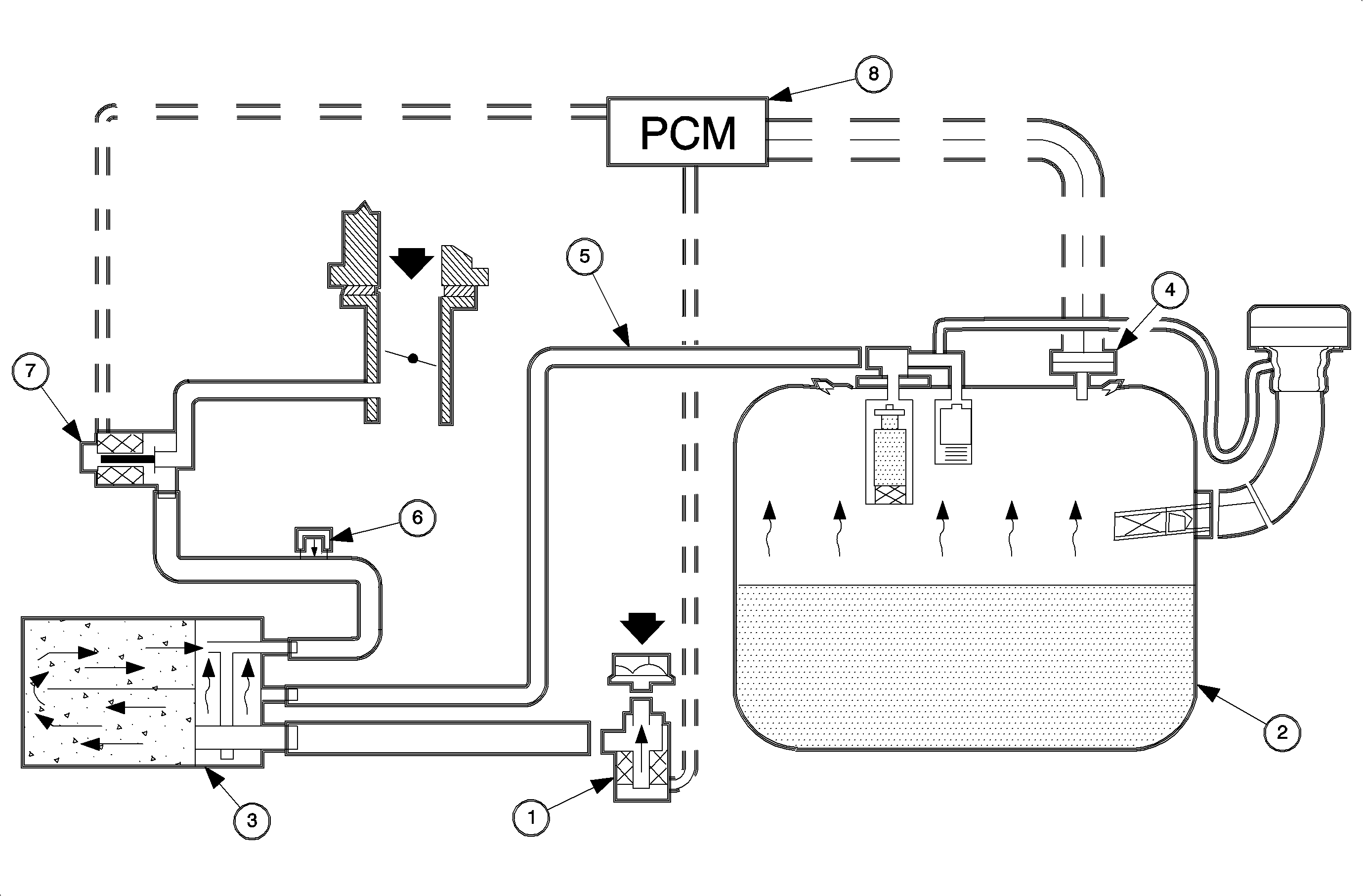
EVAP System Operation
The enhanced EVAP system is used to limit unburned fuel vapors (hydrocarbons)
from escaping into the atmosphere. Since fuel evaporation in the fuel tank is a
normal process, it is necessary to accumulate the unburned fuel vapors so they can
be purged into the intake manifold for combustion. The EVAP system consists of the
following:
| • | EVAP vent solenoid, located near fuel filler neck (1) |
| • | EVAP canister, located on top of the fuel tank (3) |
| • | Fuel tank pressure sensor, located on top of the fuel tank (4) |
| • | Fuel lines and hoses (5) |
| • | EVAP service port, located in the EVAP purge line under the left side
floorpan behind the left front wheel (6) |
| • | EVAP purge solenoid, located on the back of the engine block above the
starter (7) |
| • | Powertrain control module (PCM), located underhood between to the battery
and power brake booster (8) |
When fuel from the fuel tank evaporates, the vapors flow though the fuel level
vent valve (FLVV), located on the top of the fuel tank, to the EVAP canister. The
EVAP canister is an active carbon fiber storage container that collects fuel vapors
and prevents them from entering the atmosphere. The EVAP canister is vented to the
atmosphere through the EVAP vent solenoid. The EVAP vent solenoid is a normally
open valve that only closes during parts of the EVAP diagnostic test.
When the PCM goes into purge mode, drawing fuel vapors into the intake manifold,
it will pulse width modulate the EVAP purge solenoid by intermittently grounding
the EVAP purge solenoid circuit. As the EVAP purge valve opens and closes, manifold
vacuum draws fuel vapors from the EVAP canister.
EVAP Canister Check

An improperly functioning EVAP canister can cause problems with engine driveability
and/or vehicle refueling. The canister can become plugged with some internal obstruction
or liquid fuel, or develop an air leak.
Stalling or poor driveability can be caused by:
| • | Fuel saturated canister |
| | Disconnect the EVAP canister purge line at the underbody, near the fuel filter/regulator,
and look for liquid fuel in the line. |
| - | If liquid fuel is present, install a siphon hose on this line and attempt
to draw out more fuel. |
| | Important: If liquid fuel is present, the canister must be replaced.
|
| • | No canister purge function |
| | Evidence of fuel loss or fuel vapor odor can be caused by: |
| - | Cracked or damaged EVAP canister |
| - | Fuel saturated EVAP canister -- evaluate as noted above. |


